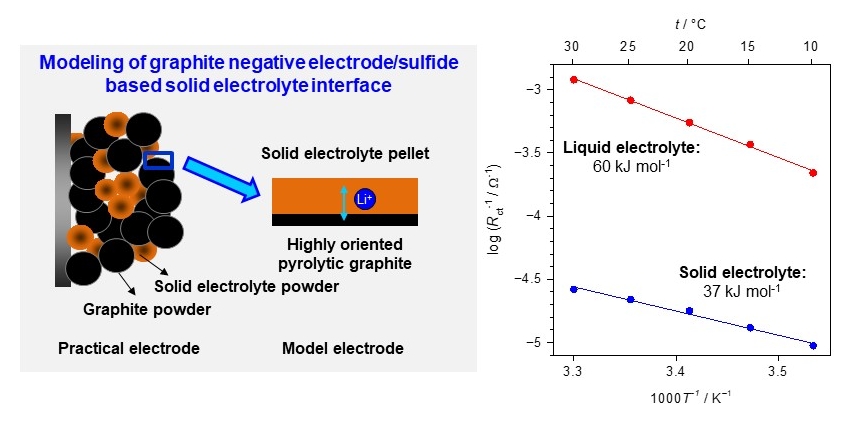Overview
Organizations
- HOME
- >
- Recent events
009
The Hayakawa Laboratory has been researching and developing high-voltage technology for vacuum power equipment to reduce global warming gases.
In order to reduce global warming gases in high-voltage power equipment, vacuum interrupters (VI), which perform the current breaking function in vacuum circuit breakers (VCB), are expected to be made with higher voltages. Regarding the voltage application conditions that have been empirically determined in the industrially used method of removing weak points in insulation by discharge between electrodes,i.e. spark conditioning, we have found that it can be optimized by the discharge charge amount from the viewpoint of the melting and adhesion mechanism of the counter electrode material. These results has been published in IEEE Transactions on Dielectrics and Electrical Insulation, vol. 30, no. 6 (2023 Dec.).
Details are here
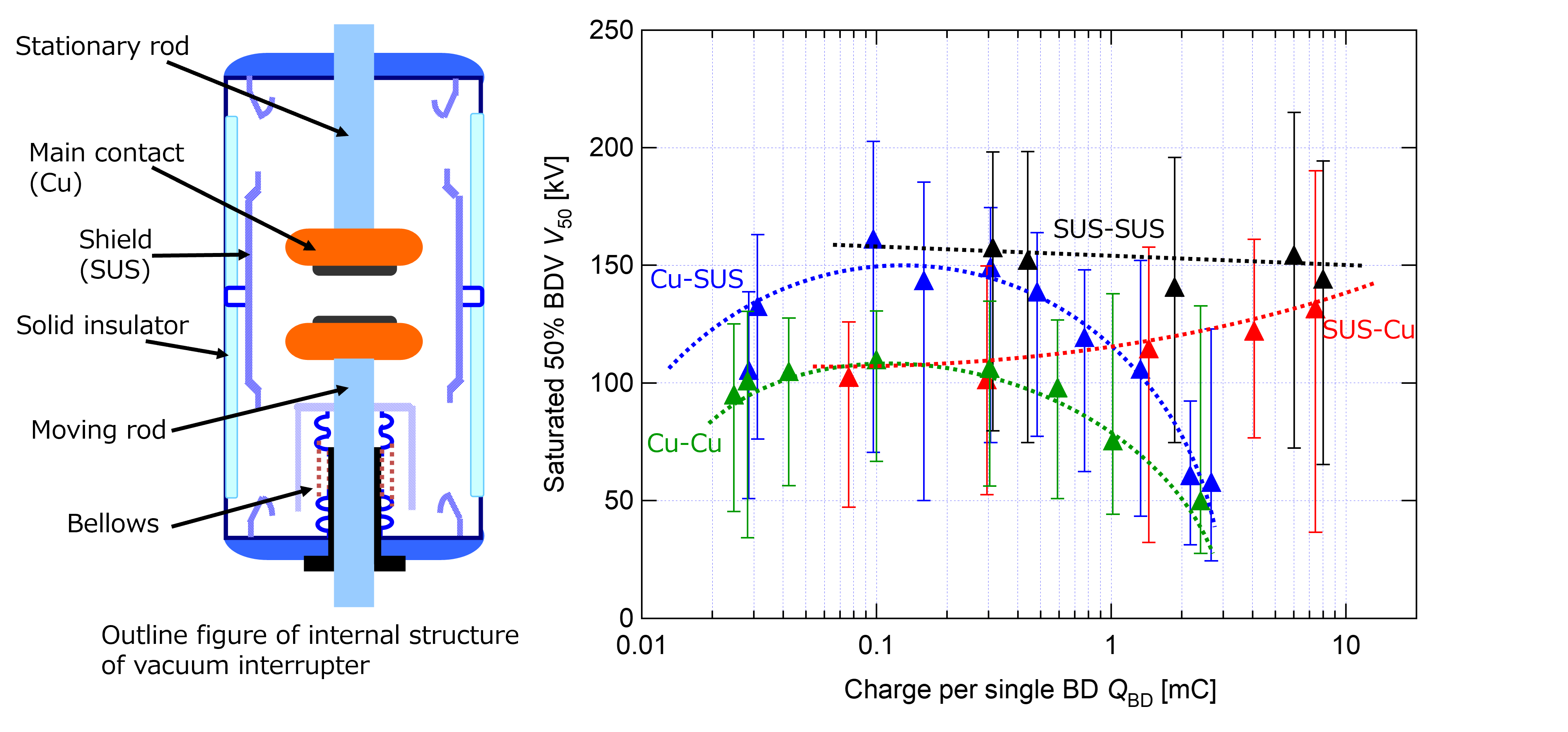
- It is necessary to ensure the insulation strength at the point where Cu and stainless steel (SUS) face each other inside the vacuum interrupter (left).
- The dielectric strength V50 that can be achieved through spark conditioning is determined by the amount of discharged charge QBD depending on the combination of counter electrodes (right).
008
(Tetsu) Iwata laboratory develops quantum attacks against symmetric key cryptosystems.
We develop quantum attacks against symmetric key cryptosystems by using quantum algorithms. The Feistel structure, one of the important structures of block ciphers, is depicted in the left figure. Under the quantum chosen ciphertext setting, the four iterations of the structure can be regarded as a periodic function in the middle figure, allowing an efficient attack with a quantum period-finding algorithm. The right figure shows a pseudorandom function called the Sum of Even-Mansour construction. Although a mathematical proof of security is known in the classical setting, we showed an efficient quantum attack against the construction.
The development of such quantum attacks will be useful in designing symmetric key cryptosystems that are secure against quantum attacks.
Details are here
Details are here
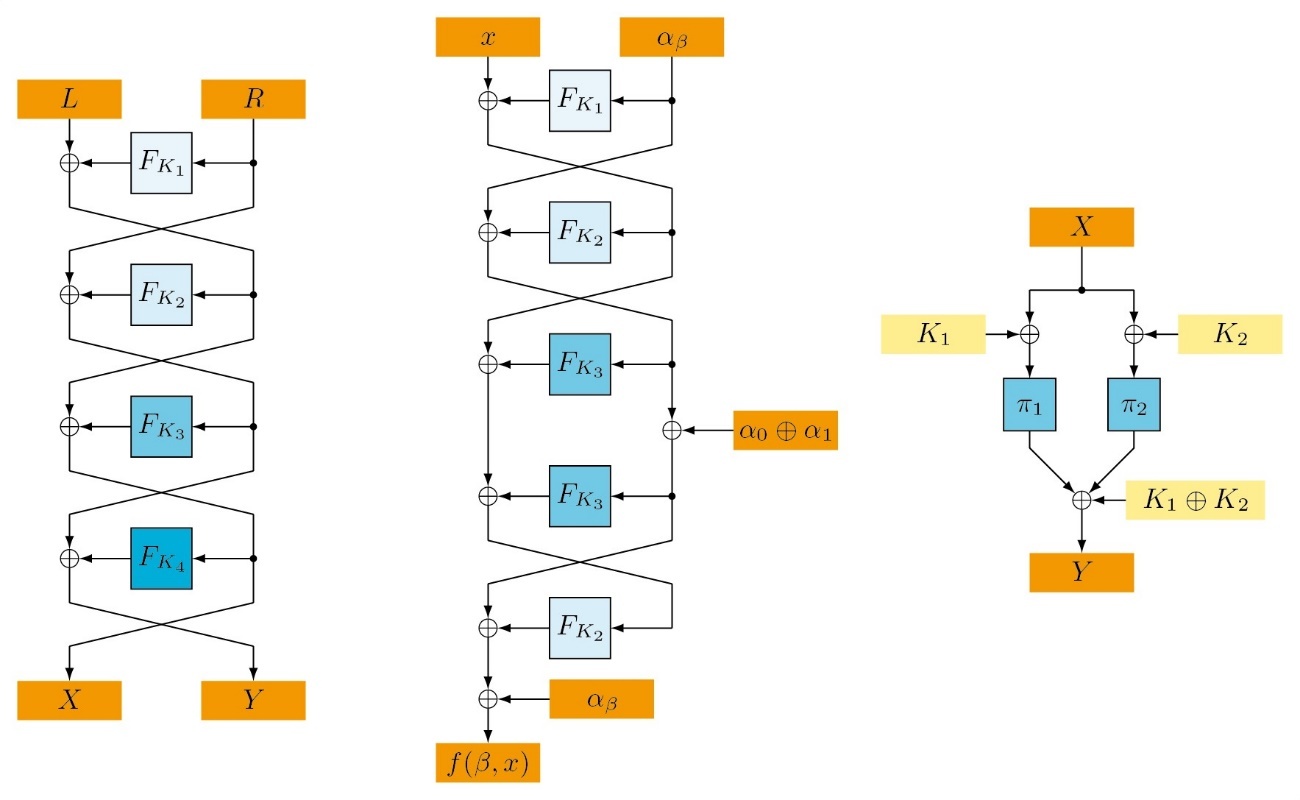
- Left figure: Overview of the Feistel structure
- Middle figure: A periodic function in the quantum chosen ciphertext setting
- Right figure: Overview of the Sum of Even-Mansour construction
007
The Tanaka Laboratory has been studying plasma cancer treatments, regenerative medicine, and plasma agriculture using plasma-activated solutions.
In the Tanaka Laboratory, we developed plasma-irradiated solutions (plasma-activated solutions) and we found anti-tumor effects by plasma-activated solutions. In collaboration with Department of Medicine and Agriculture, we are studying the mechanism of action, evaluation of safety and effectiveness, and clinical application research.
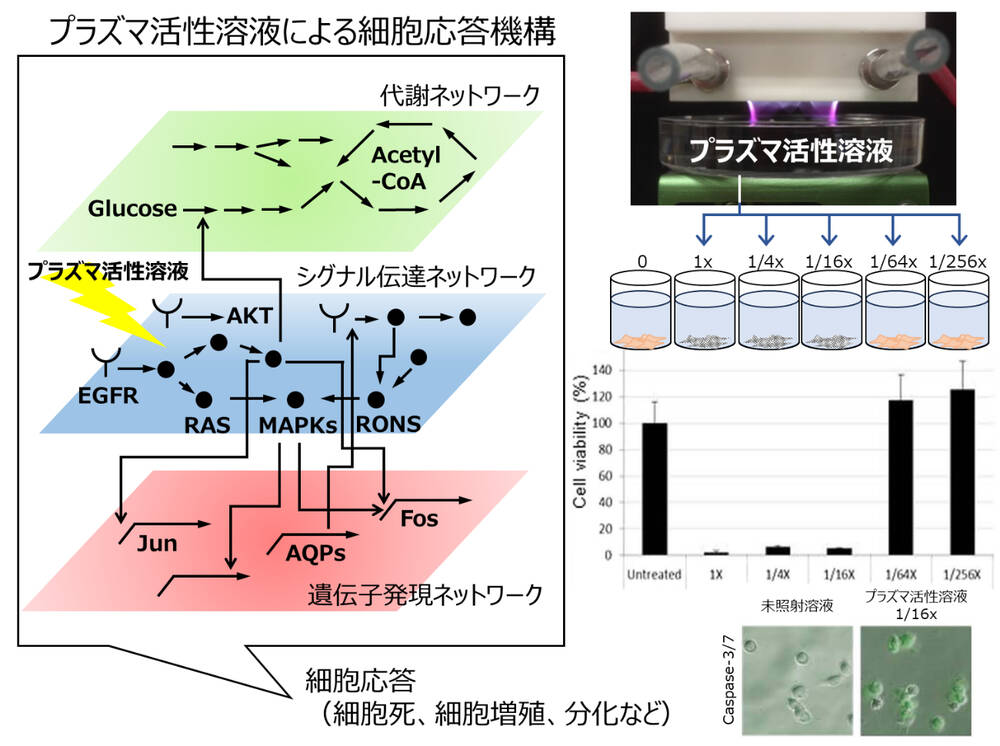
- Plasma-activated solutions can induce programmed cell death in cancer cells and cell proliferation and differentiation in stem cells. We aim to elucidate intracellular molecular mechanisms by dividing the network into layers of signal transduction networks, metabolic networks, and gene expression networks.
006
A Proof-of-Concept Multi-Band Optical Cross-Connect Node with 300+Tbps Throughput is developed and 2000+km transparent transmission is successfully demonstrated.
As the optical fiber capacity in the C-band is reaching to the theoretical limit, multi-band transmission which adopts the other bands such as S- and/or L- bands is recently attracting attention and extensively studied. However, the introduction of multi-band transmission to transparent optical networks necessiates more complex optical cross-connect nodes which equip switching/amplifying devices dedicated to each band. Therefore, cost-effective implementation of such nodes are hard. We newly developed a multi-band optical node architecture with different routing philosophy. Proposed node firstly groups optical signals in each frequency band and then merges groups of different bands. Then the node swiches the merged signal groups to send to desired outputs. We also developed a proof-of-concept prototype node whose scale is 16x16 and total throughput reaches 300+Tbps. Transmission experiments verify that signals in different bands successfully traversed 2000+km. These results has alreadly been presented at the top-ranked international confernece, Optical Fiber Communication Conference.
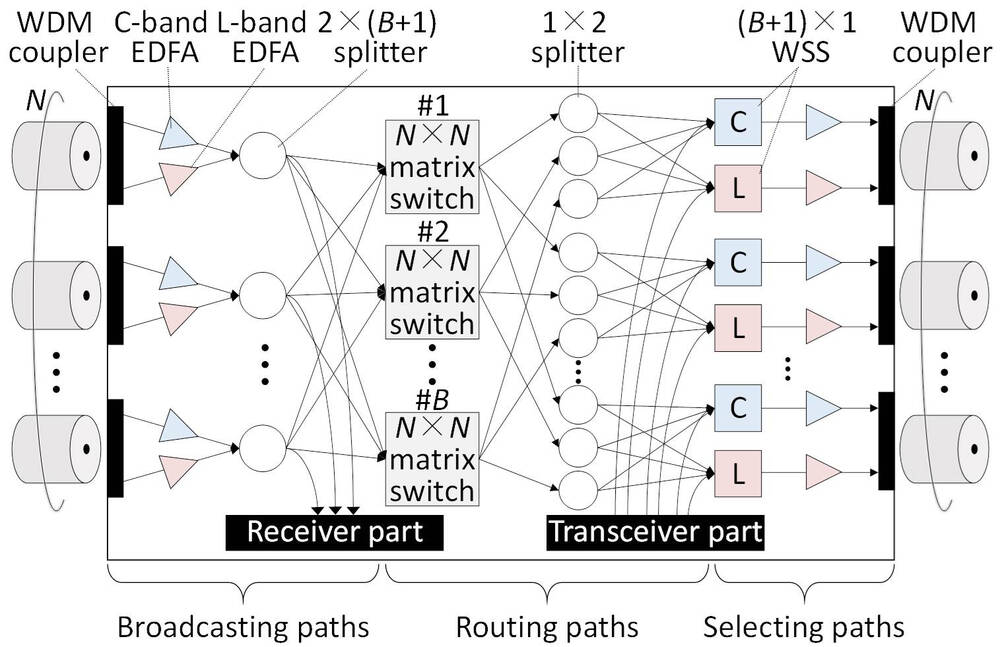
- Proposed multi-band cross-connect node architecture
005
In-liquid plasma deposition of nanographene on 3D-structured metal foams
In-liquid plasma process has been an attractive method for nanomaterial synthesis due to its high-yield production in low-temperature atmospheric pressure conditions. This work brings a new perspective on the application through carbon formation directly on three-dimensional metal substrates.
Details are here
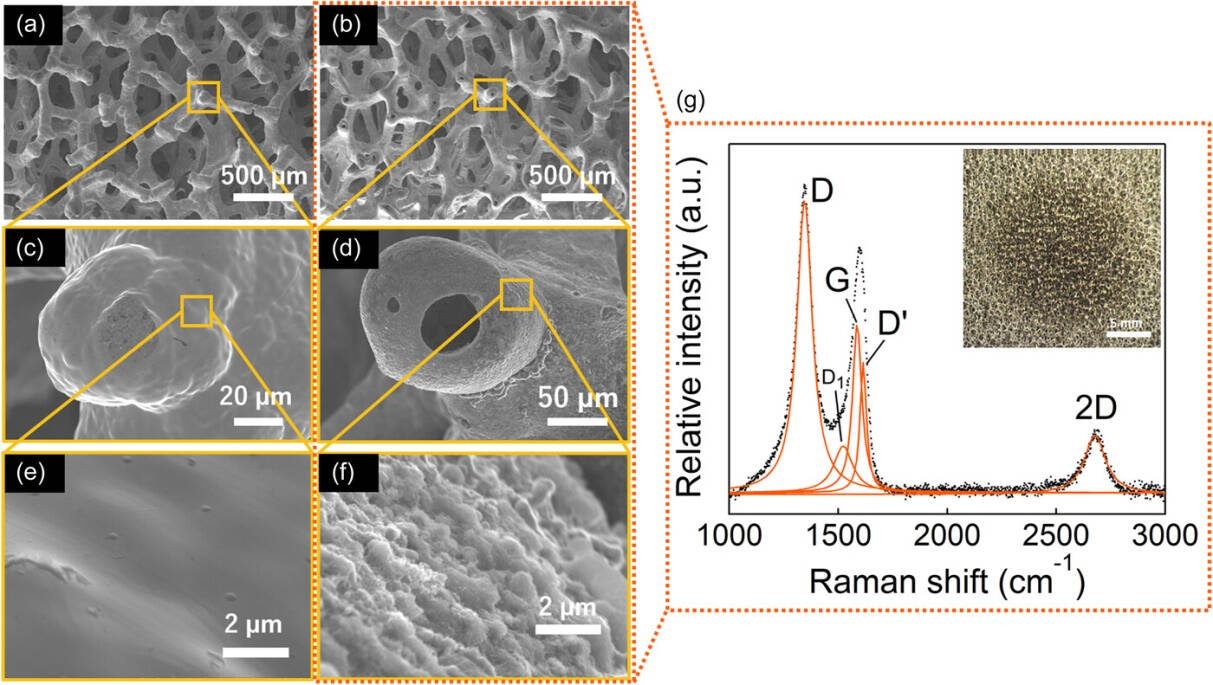
- Scanning electron microscopic images of the three dimensional (3D-) Ni foam before (a, c, e) and after (b, d, f) the in-liquid-plasma carbon deposition. Raman spectrum of (g) the deposited carbon formed on the 3D-Ni foam.
004
Yokomizu Laboratory, research group on energy control engineering, has been studying arc quenching materials to achieve higher DC interruption performance of an electric fuse used in an electric vehicle.
Yokomizu laboratory makes a research work on a method for rising the DC interruption performance of an electric fuse installed in the vehicle. The research group has recently focused on addition effect of silicone (C2H6SiO) resin to silica-sand (SiO2 powder) used as the arc quenching medium in the fuse. Experimental verifications show that additive arrangement of silicone resin around a Cu fuse element leads to a twofold increase in the transient arc resistance during the DC interruption process and, as a result, attains reduction in an interruption time of DC1000 A by 20–40% (details are here). The effect achieved by the additive silicone resin is successfully explained, based on the transport property of a mixture of SiO2/C2H6SiO vaporized at high temperatures. This work has been performed in a collaboration with an electric fuse manufacture.
Additionally, the research group also reveals the high-temperature gas properties through quantum chemical theory (details are here). Since last year, the aforementioned works have been made in a collaboration with Iwata Lab., Institute of Materials and System for Sustainability, Nagoya University.
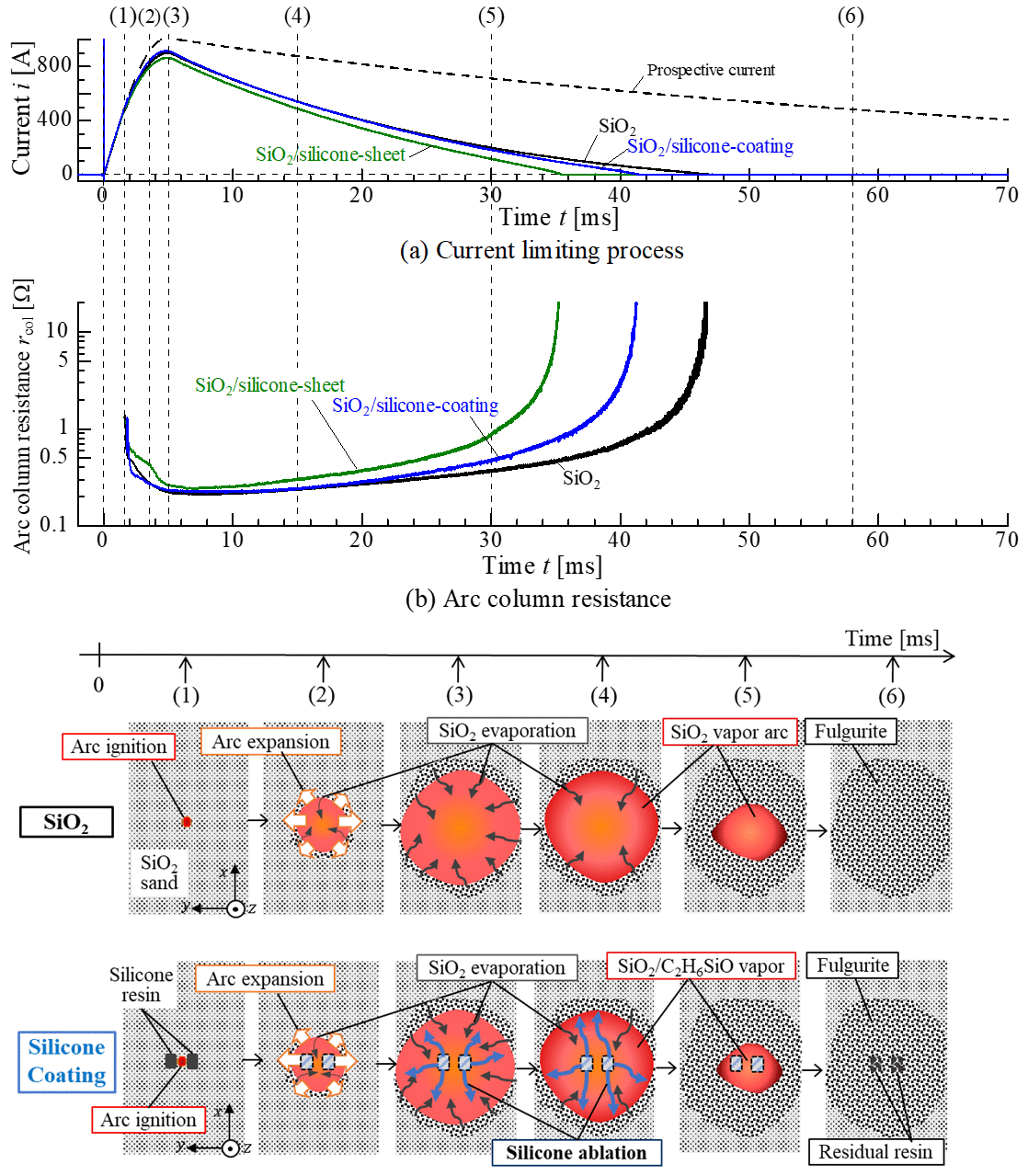
- Top: Waveform of (a) current limiting process and (b) transient arc column resistance for an arc quenching medium of SiO2/silicone-polymer.
- Bottom: Schematic diagram of mechanisms underlying arc column resistance rise.
003
Research on Holographic Display Using Phase Retrieval Method.
Holography is a method for displaying 3D objects using their wavefront information. If the amplitude and phase information of wavefronts can be recorded, we can reproduce 3D objects in the real space. However, the phase information is generally lost at recording. In Fujii laboratory, we propose a holographic display method using phase retrieval, where the missing phase information is recovered from only the corresponding amplitude information.

Optical system (left), previous method (center), and our method (right)
002
Prof. Kazuo Shiokawa has been reappointed as the President of SCOSTEP.
Prof. Kazuo Shiokawa (Electrical Engineering) was reappointed as the President of SCOSTEP (Scientific Committee on Solar-Terrestrial Physics) at the General Council Meeting of SCOSTEP which was held on July 14, 2023, in Berlin, Germany. The term is for four years from July 2023 to July 2027, in addition to the previous four years. Dr. Bernd Funke of Spain was appointed as the Vice President of SCOSTEP. SCOSTEP is an international organization under the International Science Council and is funded by 34 national and regional scientific councils and space agencies, including the Science Council of Japan. SCOSTEP proposes and promotes international programs on solar-terrestrial physics, including STEP (1990-1994), CAWSES-I, -II (2004-2013), VarSITI (2014-2018), and PRESTO (2020-2024), as well as capacity building activities such as organizing student scholarships and international schools. SCOSTEP is also a permanent observer of the United Nations Committee on the Peaceful Uses of Outer Space.
001
Analysis of interfacial reaction in all-solid-state lithium secondary battery
All-solid-state lithium secondary batteries are expected to be used for the electric vehicles. Our laboratory has revealed that the activation barrier for the interfacial reactions is lower than that of lithium-ion battery using liquid electrolyte through modeling the graphite negative electrode /solid electrolyte interface.
Details are here
